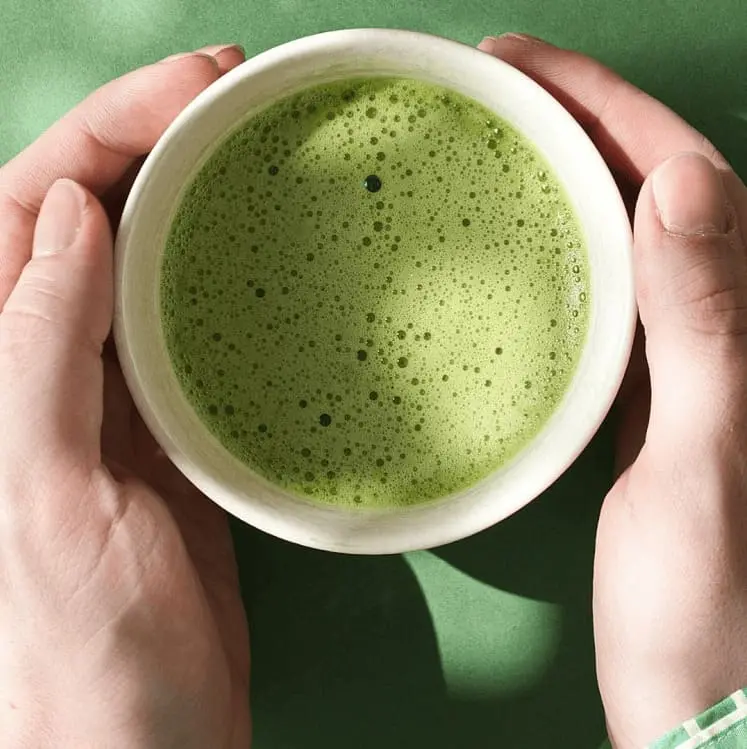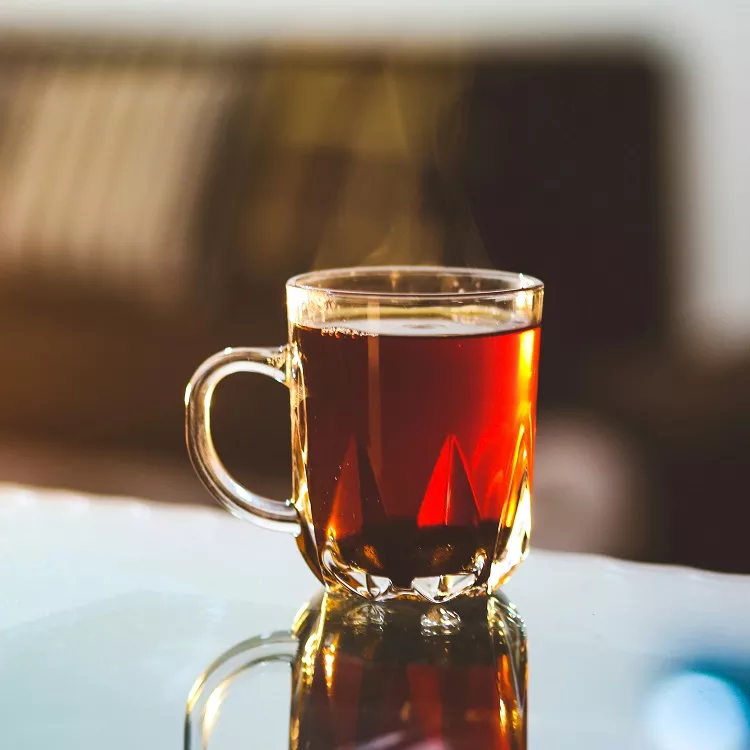What is matcha tea?
Translated from Japanese, Matcha literally means ground tea.
The beloved Japanese powdered matcha tea has become quite a common occurrence for Ukrainians. It is especially popular among people who lead a healthy lifestyle.
Made from finely ground leaves of the evergreen tea tree Camellia Sinensis, it has a bright green color, hinting at its usefulness and environmental friendliness.
A natural antioxidant that energizes and balances the nervous system has a long history.
Matcha tea came to Japan in 1191 from China. The first mentions of matcha in Ancient China can be found even before our era. The obligatory drink of aristocrats and the imperial family was not available to every Chinese due to its high cost. Having lost popularity in its homeland, it later became a traditional drink of the Land of the Rising Sun and even a part of rituals in monasteries.
The technology for making matcha tea and its chemical composition are significantly different from the technology for making and chemical composition of green tea.
Production technology
In spring or early summer, the plants are covered with a special net, creating shade. Thanks to this, within twenty days the level of chlorophyll and amino acids in the leaves increases significantly, and it becomes darker. The manually collected upper leaves are steamed and dried, kept in the cold, and only then the stems and veins are removed and ground into powder. This is how the unique biochemical composition of matcha tea is obtained.
The color of the powder can vary from light yellow-green to deep green depending on the quality and method of processing of the leaves.
There are 3 varieties of matcha green tea: ceremonial, made from the youngest leaves, which is used by Buddhist monks; premium, the leaves for which are picked a little later, with a more intense flavor; and, the most intense, culinary variety, the leaves for which are picked last.
Matcha tea (matcha) buy in Kyiv
Chemical composition and chemical properties
Matcha tea has almost double the caffeine content of green tea.
Thanks to L-theanine, which contains this product, caffeine is absorbed much more slowly without provoking sharp jumps in blood pressure. Thus, it is safer for people with hypertension. However, if you have problems with the cardiovascular system, you should not abuse it. A cup of this tea in the morning will be a sufficient source of energy and trace elements for the whole day.
Useful properties of matcha tea
Matcha tea is not just a delicious drink, but a real treasure trove of nutrients. Thanks to the special technology of growing and processing the leaves, this Japanese tea has a unique biochemical composition, which makes it extremely beneficial for the body.
L-theanine has a number of beneficial properties. Dopamine and serotonin are produced thanks to this component. It also has a positive effect on the brain, promotes relaxation and improves mood.
Epigallocatechin gallate, a super-powerful antioxidant found in matcha tea, is 100 times more potent than any other tea, helping to prevent cancer and aid in weight loss.
There is some evidence that matcha tea reduces the risk of liver disease, but more research is needed on this topic.
Thanks to rutin, which is also a component of green tea, the work of the cardiovascular system improves and blood pressure normalizes.
Quercetin, another component of the drink, is not synthesized by our body. We can get it exclusively from food. This element also contributes to better functioning of the cardiovascular system, and in addition, it has an anti-inflammatory effect and prevents the occurrence of cancer.
If you brew matcha as recommended with hot water, not boiling water, this miraculous green tea will preserve vitamin C, a widely known antioxidant that protects cells from damage, promotes collagen production, helps absorb iron, and boosts immunity.
What other beneficial properties of matcha tea make it so highly valued?
- Improving attention and memory
- Increasing reaction speed and brain speed
- Acceleration of metabolism
- Cholesterol and blood pressure regulation
- Removal of toxins and waste
- Slowing down the aging process, etc.
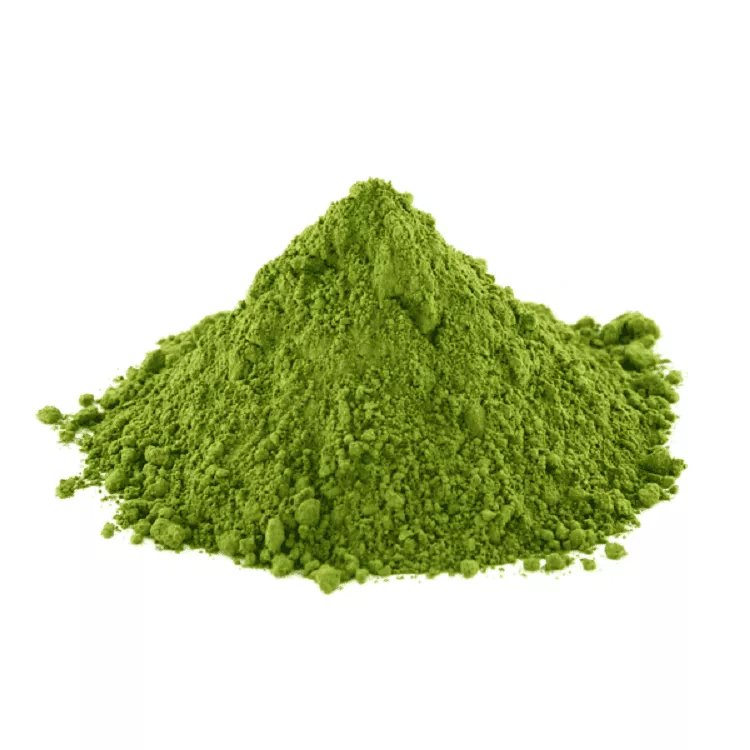
Cooking technique
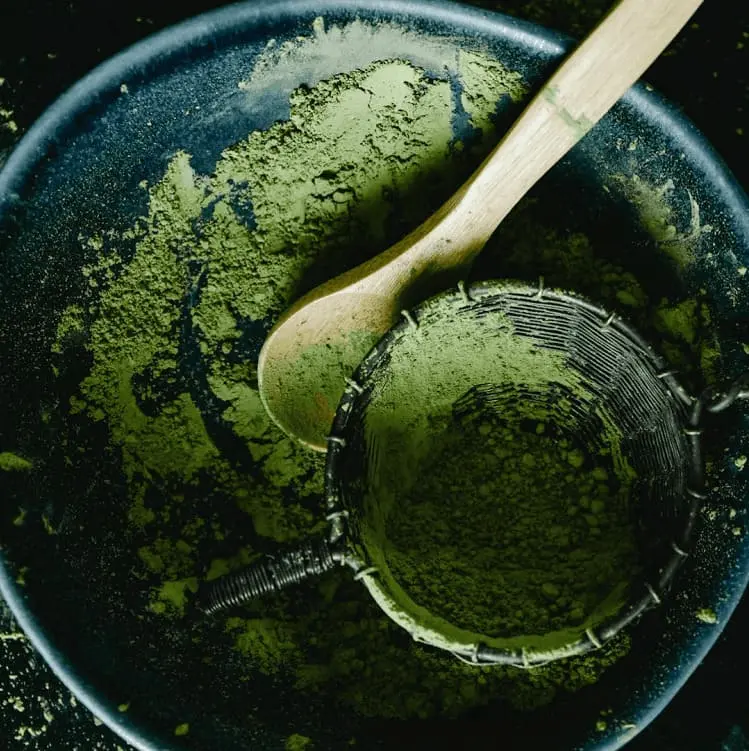
To properly prepare matcha tea, you will need a teapot/chawan (a special bowl for drinking tea), a chasen (bamboo whisk), a strainer, a measuring spoon, and the green powder itself.
There are two traditional ways of brewing this drink: strong (koitya) and weak (usutya).
First, the matcha tea making utensils are heated using hot water and a whisk.
The dishes are wiped dry, after which 2 measuring spoons of green powder are added to the teapot, approximately 2 g. sifted through a sieve. After that, 70-80 ml of hot water is added, whisking with a whisk to prevent lumps and obtain a dense foam. This is the classic recipe for usutya.
It is very important to serve this drink immediately after preparation, as sediment gradually forms at the bottom and the tea loses its taste.
In Ukraine and Europe, people prefer an unconventional way of preparing this tea, with the addition of milk. There are many recipes for making green latte. Animal and vegetable milk are used for its preparation. To soften the taste, you can add honey or sugar. In the summer, this refreshing drink is prepared with ice.
Culinary use
Matcha green tea powder is widely used in cooking. The range of uses is wide, from a complete ingredient to a decoration.
Late harvest leaves have a rich flavor, aroma, and color. This is exactly how it should be, so as not to get lost in the combination, but to shade the taste of other products.
This green powder is a great addition to desserts and main dishes.
Cakes, soufflés, meat sauces, smoothies, ice cream, marshmallows, pancakes, pasta, chocolate – this is far from a complete list of dishes to which this tea ingredient is added.
There are certain recommendations for using matcha in cooking .
For example, to add matcha tea to the dough, the powder must first be soaked in hot water. We prepare the drink according to the classic recipe, adding water until we get the desired color and flavor. In this form, the green powder harmoniously combines with other liquid ingredients.
This tea can be an additional remedy for treating colds. To do this, take 2 g of green powder and cinnamon and prepare it on the basis of milk. If desired, you can add coconut oil and sweetener.
Practical recommendations
When choosing matcha tea, pay attention to its texture and color. A high-quality product should be bright emerald, very finely ground, and feel like silk to the touch.
Despite all the obvious benefits of this drink, it is not a medicine and has contraindications.
This tea is prohibited for pregnant women, and it is also not recommended for people with high blood pressure or sleep problems to drink it at night due to the high level of caffeine in the composition.
This powdered drink easily absorbs moisture and odors, so it should be stored in an airtight container. It is important to keep the container away from sunlight and heat sources, as it oxidizes easily.
Conclusion
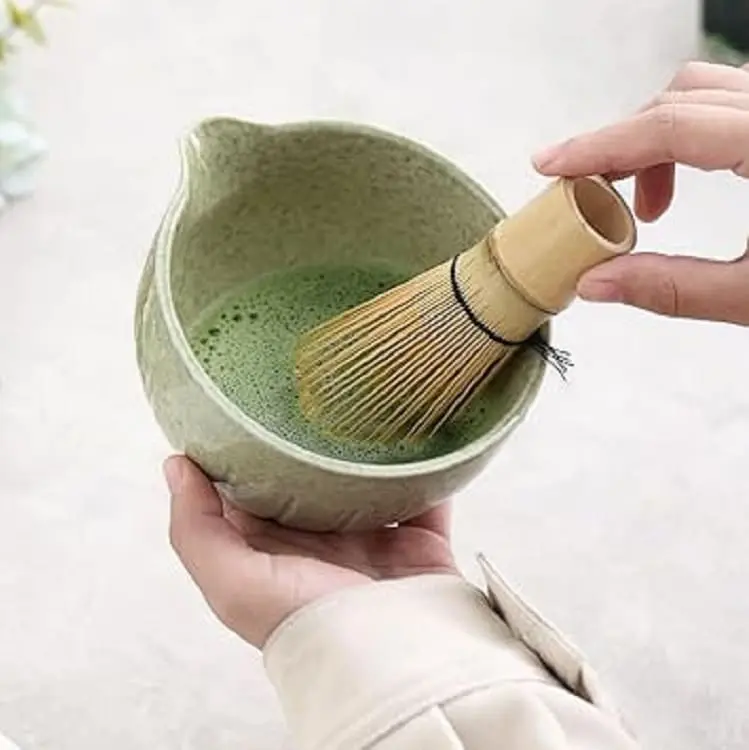
Matcha is an integral part of a successful, healthy life for a modern person.
By following simple recommendations, you can enjoy the meditative process of cooking and the fresh aroma of spring greenery every day, as well as get a boost of energy and a powerful portion of micro- and macronutrients, improve your health, appearance, and emotional state.
